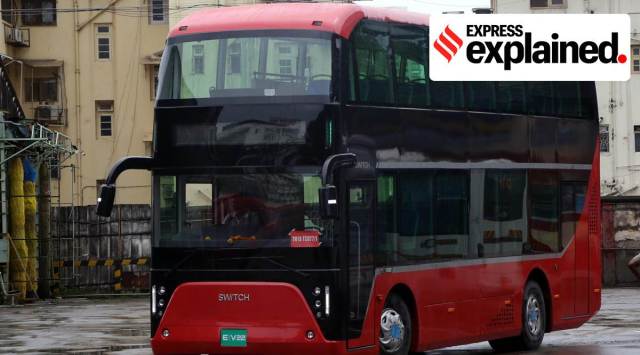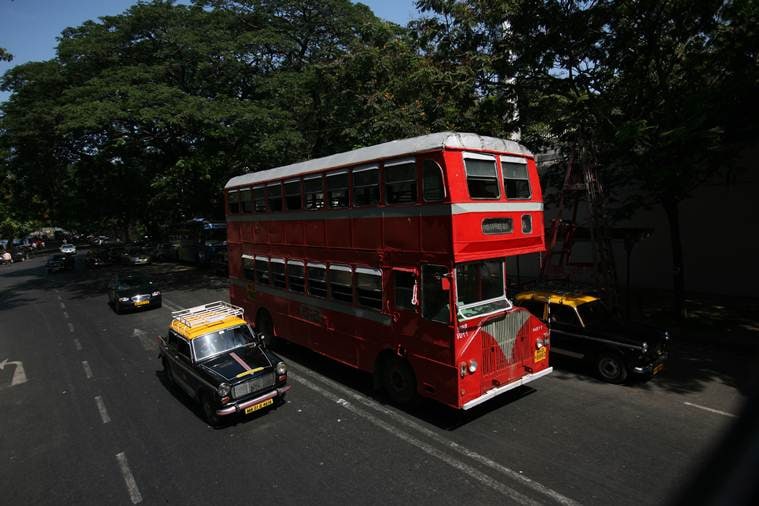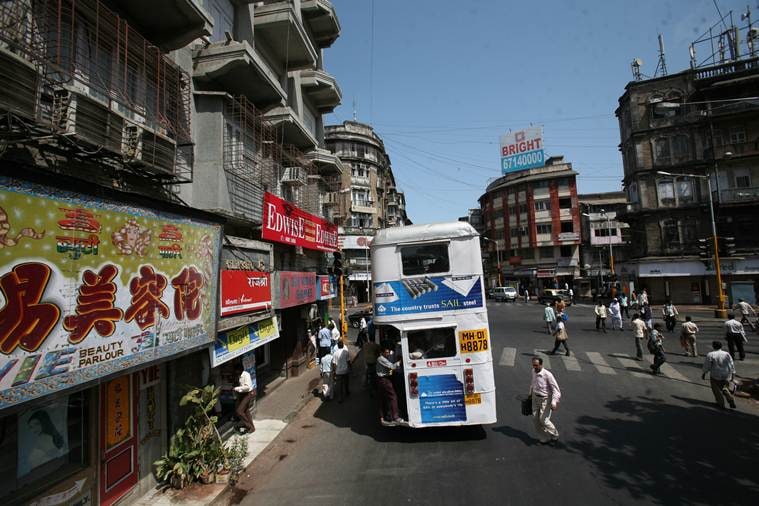Explained: Mumbai’s iconic double decker buses—why they were phased out, and why they have returned to the city’s roads
BEST launched its first double decker e-bus on Thursday, rekindling with a new-age twist Mumbai's 70-year romance with these storied vehicles. When did the classic red double deckers first appear on Mumbai's streets? Why were they phased out?
 First Electric Double Decker BEST Bus was Seen on Road in Mumbai on Wednesday. (Express photo by Ganesh Shirsekar)
First Electric Double Decker BEST Bus was Seen on Road in Mumbai on Wednesday. (Express photo by Ganesh Shirsekar)BEST launched its first double decker e-bus on Thursday (August 18), rekindling with a new-age twist Mumbai’s 70-year romance with these storied vehicles. What made BEST’s double deck buses so iconic for Mumbaikars of a certain age — and why were they phased out?
When did the classic red double deckers first appear on Mumbai’s streets?
The double deckers were introduced to Mumbai by the British in 1937. They were modelled around London’s motorised double decker buses. Over the years, as the city then known as Bombay expanded, the number of these buses increased — reaching as many as 900 in the 1960s, by when they had become one of the city’s most identifiable features.
The double deckers were popular with both tourists and locals. They were capacious, and because of their height, allowed commuters to enjoy an unhindered view of the city. The streets of South Mumbai especially were quieter, less crowded, and more scenic at the time. Older residents of the city continue to recall with fondness the memories of their childhood and youth, travelling on the top deck of the double decker buses, enjoying the city.
 The double deckers were introduced to Mumbai by the British in 1937. (Photo: Neeraj Priyadarshi)
The double deckers were introduced to Mumbai by the British in 1937. (Photo: Neeraj Priyadarshi)
Where in Mumbai did these double deckers ply?
By the 1960s, the buses plied on 26 routes across Mumbai. In South Mumbai, they were more popular among tourists and Mumbaikars looking for an evening outing, whereas in the suburbs, they played the role of last mile connectivity.
One of the most popular routes in the suburbs was Santacruz station to Juhu Church during the peak morning and evening hours, as auto-rickshaws came to the suburbs only in the 1970s.
The buses were initially named after letters of the English alphabet, but as the demand for them increased and the city itself expanded, they were renamed with numbers. The popular Route ‘C’ became route 123, which operated between RC Church in Colaba and Tardeo, going past Colaba Causeway, Regal Cinema, Flora Fountain, Marine Drive, and Girgaum Chowpatty.
Another popular route was 130, which covered areas of Fort Market, Crawford Market, Pydhonie, and showed a different side of the city, including some of its nightlife.
So why did BEST begin to phase them out?
BEST began to phase out these buses essentially because spare parts were not easily available, they were more expensive to acquire, and difficult to transport due to their weight. It was also argued that the double deckers were fuel guzzlers, and were becoming financially unviable.
As they were introduced during British rule, the buses were all supplied by foreign manufacturers such as Daimler, AEC (Associated Equipment Company), and Leyland Motors. It was not until 1955 that an Indian company, Ashok Leyland, began manufacturing them. BEST also said that operating double decker buses required more staff, with an extra conductor for the top-deck.
Now, only 48 double decker buses remain, which will be phased out by 2023.
 For many older Mumbaikars, the iconic double deckers rekindle fond memories of their childhood and youth, travelling on the top deck of the double decker buses, enjoying the city. (Photo: Neeraj Priyadarshi)
For many older Mumbaikars, the iconic double deckers rekindle fond memories of their childhood and youth, travelling on the top deck of the double decker buses, enjoying the city. (Photo: Neeraj Priyadarshi)
What is different about the new AC double decker e-buses?
They are environment-friendly, airconditioned vehicles that BEST will take on wet lease. The drivers would be provided by the private operator of the vehicles, and the operator will also take care of the maintenance and the operational cost of the buses. BEST pay the operator Rs 56.40 per kilometre.
The buses will be modern vehicles, with automatic doors, will have CCTV cameras, and special arrangements for communication between the two conductors on board. According to transport expert Ashok Datar, the buses will be an asset because they will accommodate twice the number of commuters over the same road space.
The first of these AC double decker e-buses was launched by Union Minister Nitin Gadkari on August 18 evening, and the buses will start plying on the street within four weeks. BEST will acquire 900 such e-buses, and will introduce them in a phased manner until 2023.






































